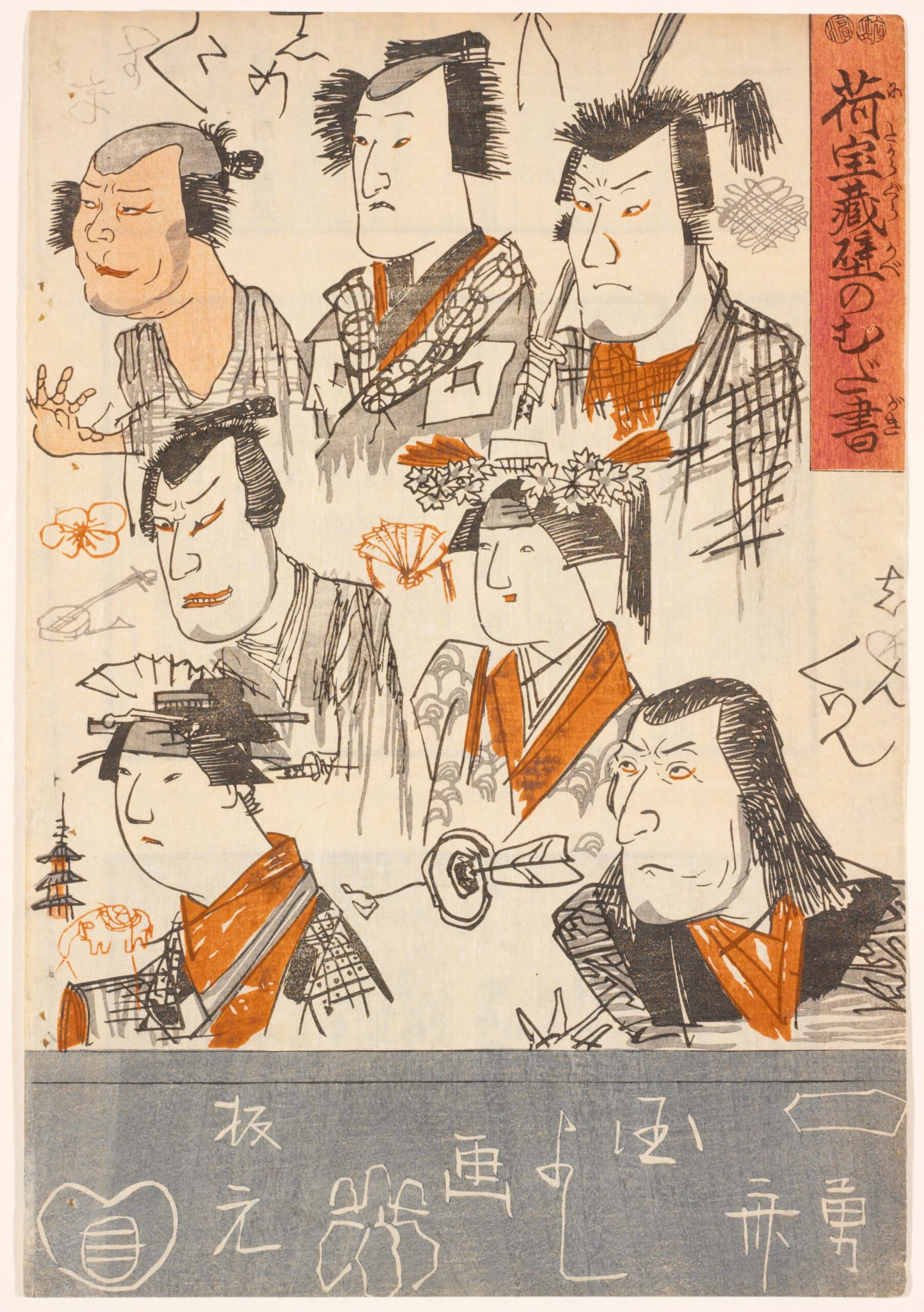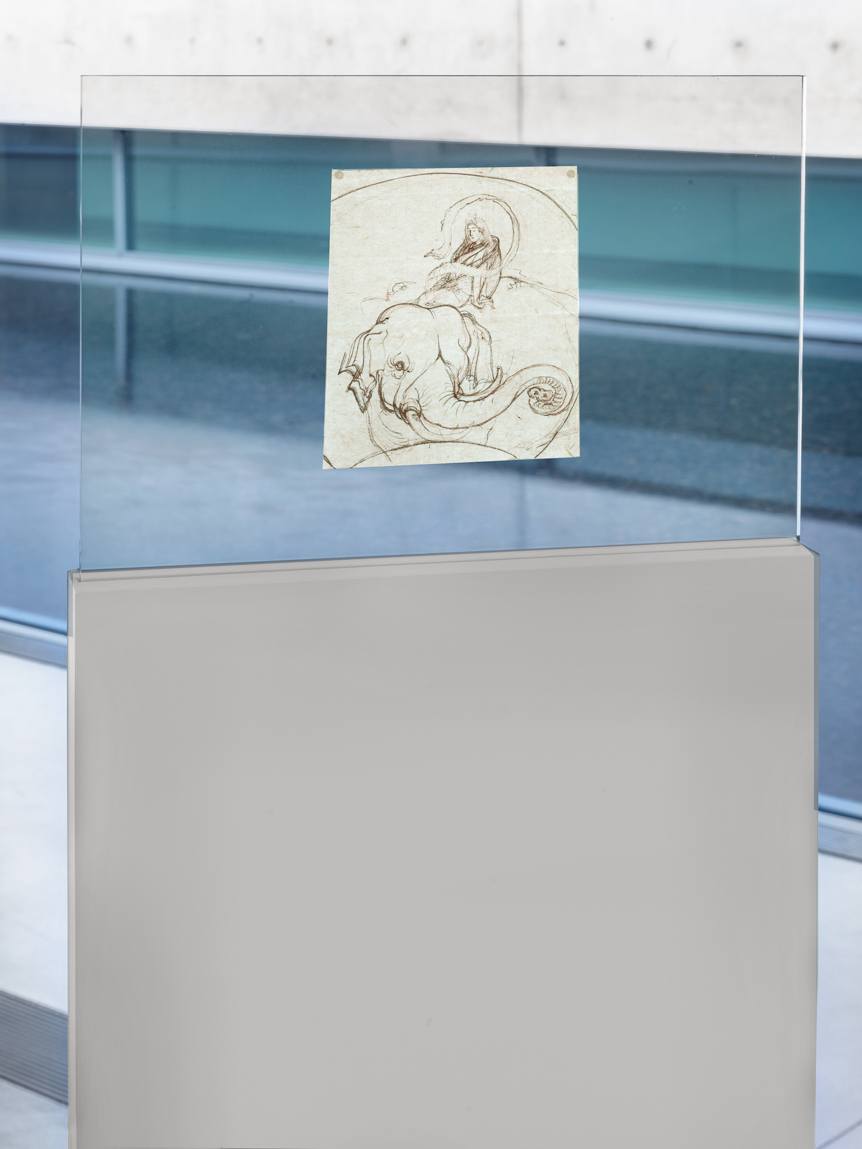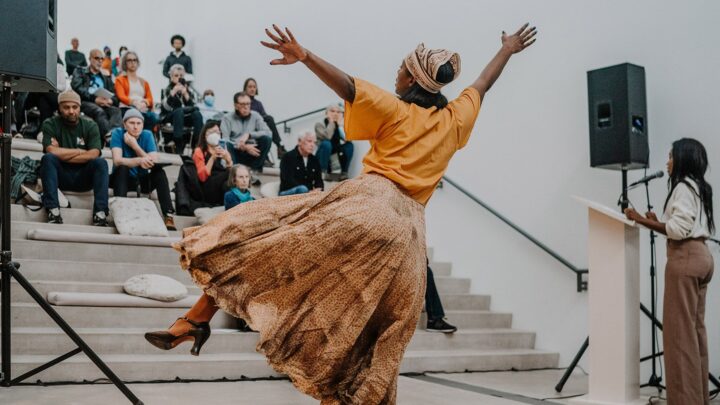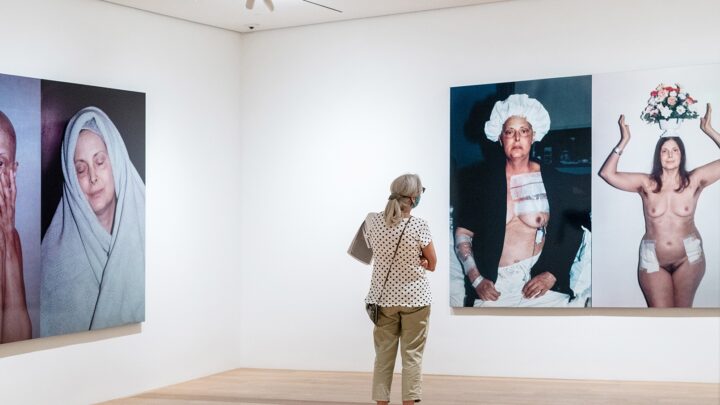The nineteenth-century woodblock prints known as ukiyo-e, which translates to “floating world pictures,” frequently included images of activities that the broader public found fascinating, many of them depicting urban pastimes of the commoner class, such as kabuki theater—one of the most popular and raucous forms of entertainment during the Edo period. Utagawa Kuniyoshi (1798–1861), who was widely considered one of the most imaginative Japanese artists of his day, created a number of such images, developing ingenious ways of circumventing government restrictions.
Although in high demand, images of kabuki actors like those in Kuniyoshi’s Scribblings on the storehouse wall (1843–47), pictured above, were periodically banned by the government during the Edo era in the belief that their popularity corrupted public morals. In creating this work, which comprises caricatures of seven celebrated kabuki actors, Kuniyoshi operated under the conceit that he was merely copying graffiti that had been etched into the plaster of a storehouse wall, and not presenting new designs of the depicted actors. Nonetheless, these are clearly portrayals not only of the actors’ specific features, but also of their mannerisms and gestures.
Living Proof: Drawing in 19th-Century Japan presents a rare group of works on paper from the Edo and Meiji periods, exploring the multifaceted role of drawing in the development of Japanese illustration and woodblock prints during this time. To learn more about Kuniyoshi’s work, visit Living Proof, on view through March 3, 2018.




